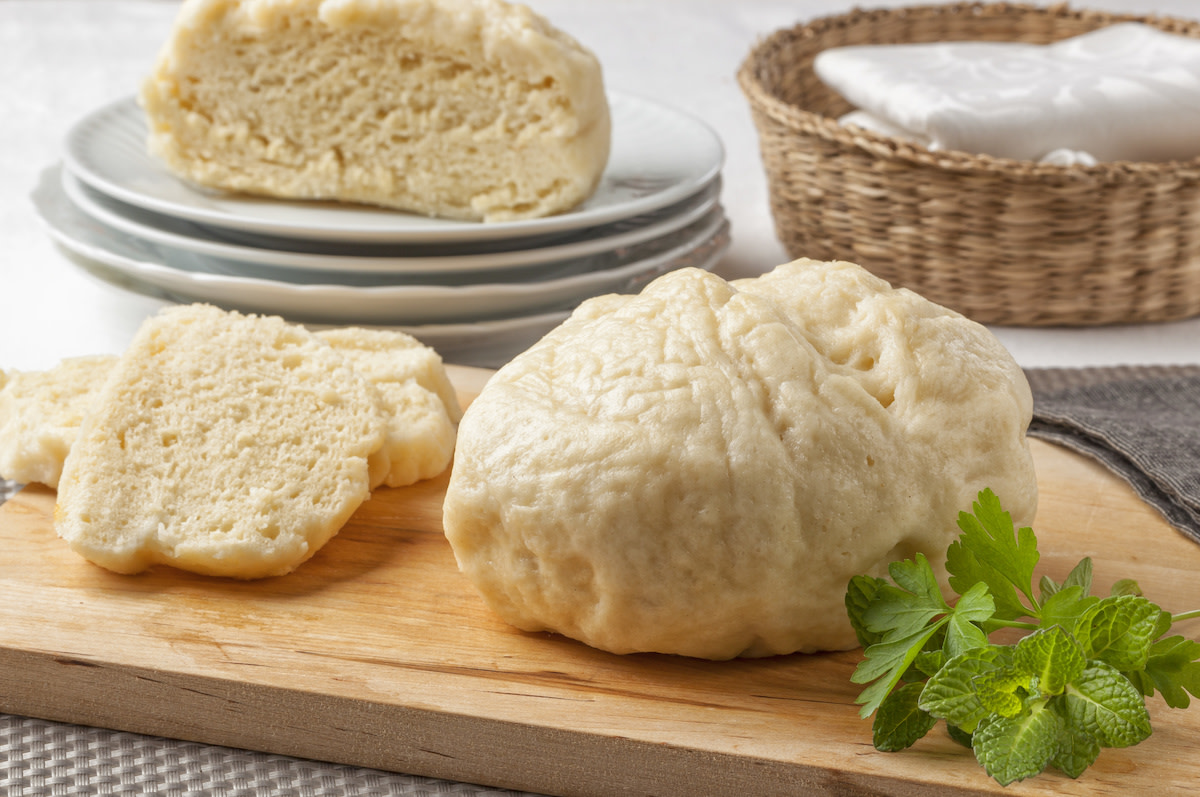Easy Homemade Knödel Recipe (Recipe for German Bread Dumplings)
Written by MasterClass
Last updated: Dec 21, 2025 • 3 min read
A unique use for old bread, knödel are tender German bread dumplings reminiscent of moist, savory bread pudding. When rolled into balls, they’re an airy accompaniment to braised meat such as rouladen and sauerbraten. Formed as a log and then sliced and pan-fried, they’re a tasty snack on their own.
Learn From the Best
What Is Knödel?
Knödel is the German word for dumpling, and as such there are dozens of varieties. The most popular, however, are probably semmelknödel, which are made from day-old bread rolls (semmeln) soaked in warm milk and seasoned with onion, parsley, and a pinch of nutmeg.
There are two basic ways to form bread-based knödel.
- 1. The simplest method involves rolling the bread dough into balls, which are then dropped directly into boiling water.
- 2. Serviettenknödel (“napkin” dumplings) are made by rolling the dough into logs and then steaming them whole, traditionally in a tied-up cloth but now more often in plastic wrap and foil. After steaming, serviettenknödel are cooled and sliced.
4 Varieties of Knödel
Knödel of all kinds are enjoyed throughout Germany, from Bavaria and the Black Forest in the south to Thuringia—where knödel are called klöße—in the north, as well as in Austria and the Czech Republic.
- Brezelknödel: Dumplings made with pretzels in place of bread rolls.
- Speckknödel: Knödel that has pieces of bacon in the dumpling mixture.
- Kartoffelknödel: Potato dumplings made with mashed potatoes and enriched with potato starch instead of bread.
- Germknödel: Sweet Austrian knödel made with a yeasted dough and filled with plum jam.
3 Tips for Making Perfect Knödel
- If you don’t have stale bread, thinly slice fresh bread and toast in a moderately heated oven (around 325°F) until slightly dry, about 10-15 minutes.
- You can use any type of bread for knödel, simply adjust the amount of milk and eggs depending on how the specific bread absorbs the liquid. White bread, brioche, and other soft, porous breads will quickly soak up moisture, whereas bread cubes made from pretzels, bagels, or kaiser rolls will maintain their shape better and require more liquid to achieve the same level of moistness.
- If your dough ends up a too wet, don’t worry—add a little flour or breadcrumbs to soak up the extra moisture.
How to Serve Knödel
In Germany, freshly boiled knödel are served as a side dish to accompany hearty fare like braised meat, gravy, roast pork, and lentils. For added flavor and texture, try pan-frying your boiled serviettenknödel in melted butter. Serve pan-fried knödel as an appetizer with ham, sauerkraut, and mustard. Pan-frying works best for knödel made using the log method, since they have a flat surface area that yields even browning.
Classic German Knödel Recipe
makes
10, as a side dishprep time
40 mintotal time
1 hr 30 mincook time
30 minIngredients
- 1
In a large bowl, combine the bread with enough warm milk to saturate. (You may not need all of the milk.) Let soak for 30 minutes.
- 2
In a medium skillet, heat the butter over medium heat. Add the onions and sauté until soft and translucent, about 5-10 minutes. Season with a few pinches of salt, a few turns of freshly ground black pepper, nutmeg, and parsley. Transfer the onion mixture to the bread mixture.
- 3
Add half the beaten eggs to the bread mixture and mix with your hands. Continue adding egg and lightly kneading until a wet dough forms. If the dough is too sticky, add a little flour or breadcrumbs. Set aside to rest at room temperature for 10 minutes.
- 4
Bring a large pot of salted water to a boil over high heat. Use damp hands to form 2-inch balls with the bread mixture. Working in batches, lower the knödel into the boiling water and cook until firm, about 15 minutes. Using a slotted spoon, transfer to a plate lined with a clean towel to drain.
